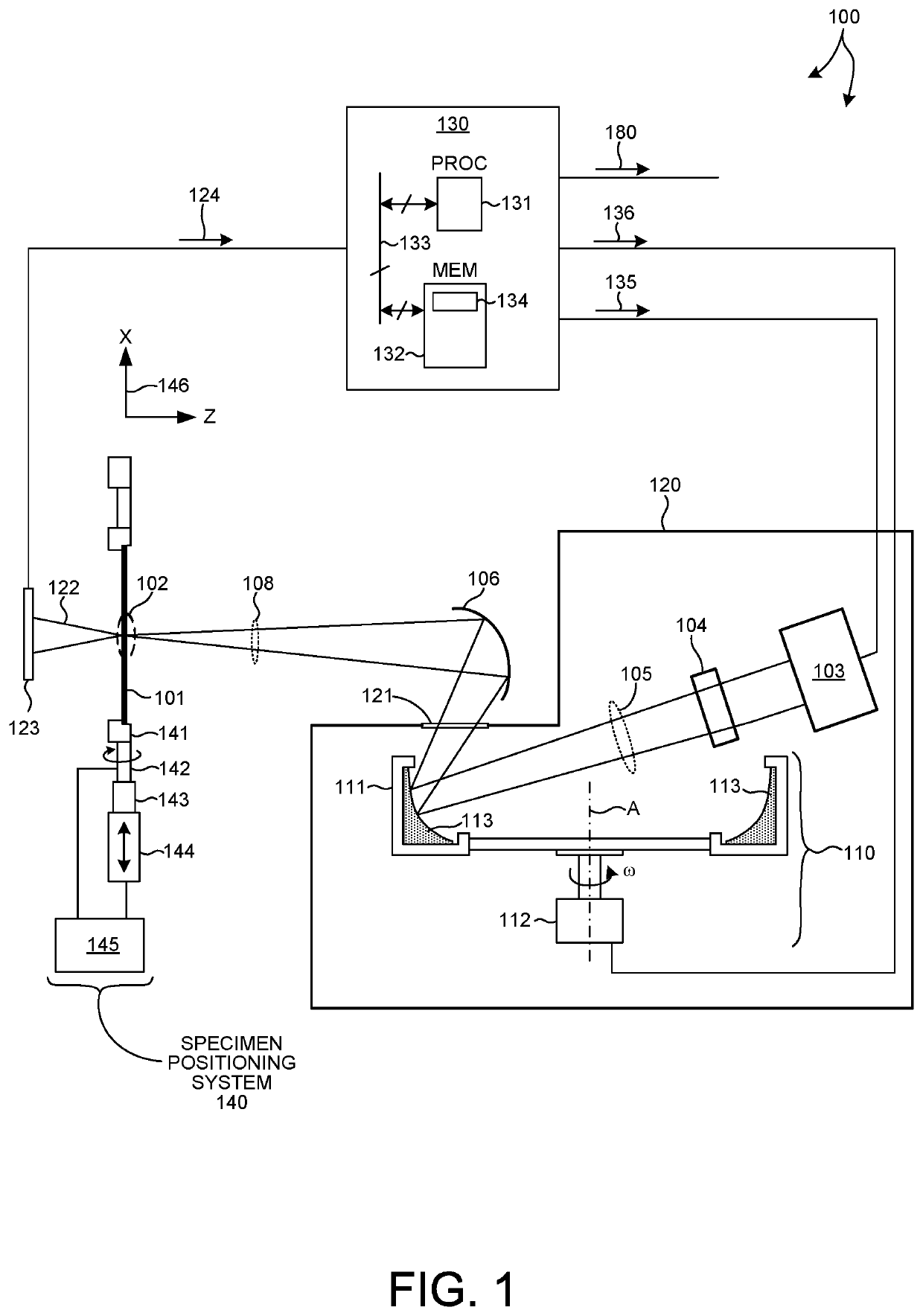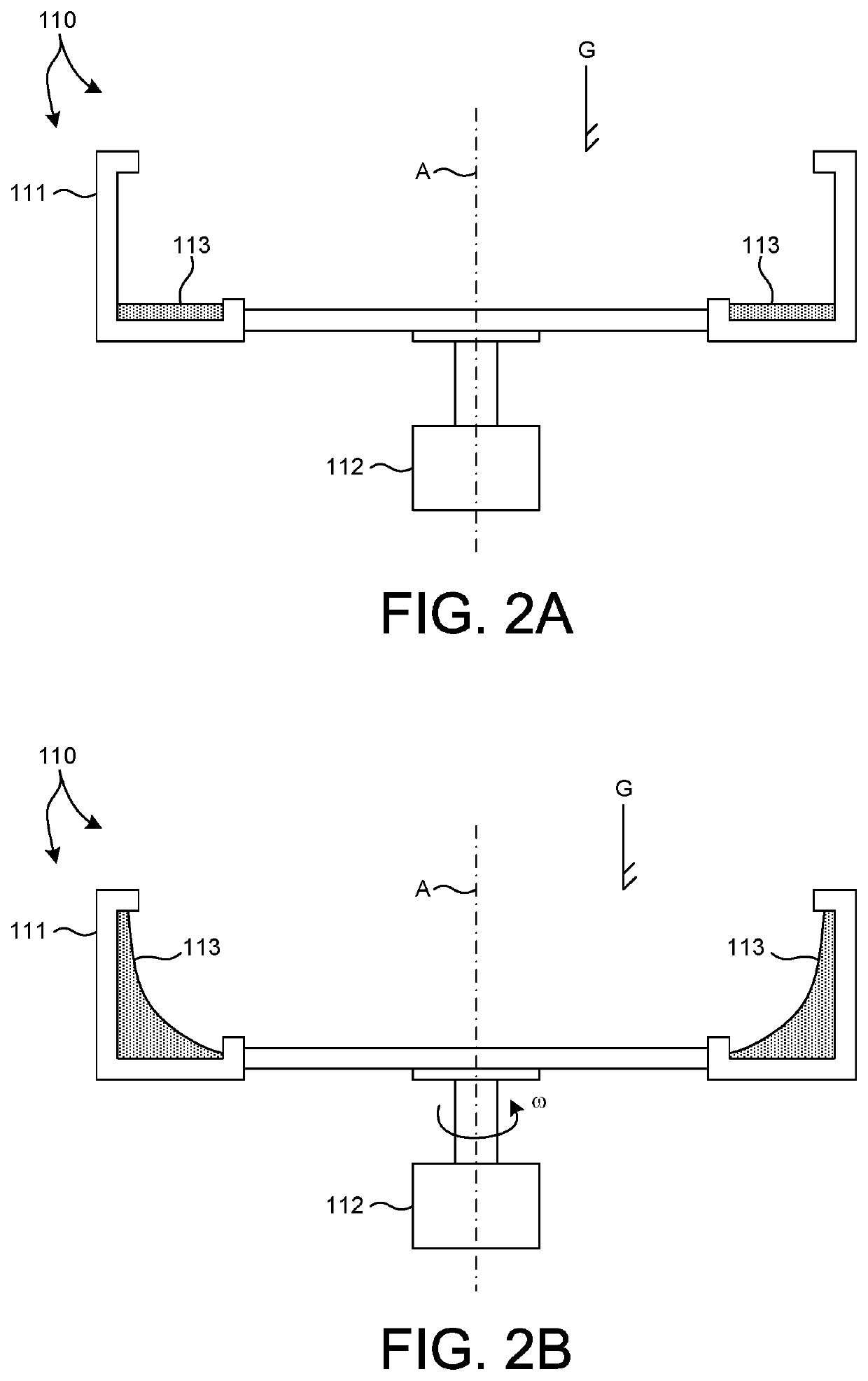Liquid metal rotating anode X-ray source for semiconductor metrology
a technology of liquid metal rotating anode and x-ray source, applied in the field of metalrology systems and methods, can solve the problems of difficult optical radiation penetration to the bottom layer, difficult characterization, and increased difficulty in characterization, so as to achieve effective self-healing, improve brightness and reliability, and increase the time interval between services
- Summary
- Abstract
- Description
- Claims
- Application Information
AI Technical Summary
Benefits of technology
Problems solved by technology
Method used
Image
Examples
Embodiment Construction
[0047]Reference will now be made in detail to background examples and some embodiments of the invention, examples of which are illustrated in the accompanying drawings.
[0048]Systems employed to measure structural and material characteristics (e.g., material composition, dimensional characteristics of structures and films, etc.) associated with different semiconductor fabrication processes based on x-ray illumination are presented. More specifically, methods and systems for realizing a high brightness, liquid based x-ray source suitable for high throughput x-ray metrology are presented herein.
[0049]In one aspect, a high brightness x-ray source is produced by bombarding a rotating liquid metal anode material with a stream of electrons to generate x-ray radiation. The resulting x-ray emission is collected and provided to a semiconductor specimen to perform x-ray based metrology on the specimen.
[0050]The liquid metal material surface does not degrade (e.g., crack) under cyclic thermal s...
PUM
| Property | Measurement | Unit |
|---|---|---|
| roughness | aaaaa | aaaaa |
| frequencies | aaaaa | aaaaa |
| average power | aaaaa | aaaaa |
Abstract
Description
Claims
Application Information
 Login to View More
Login to View More - R&D
- Intellectual Property
- Life Sciences
- Materials
- Tech Scout
- Unparalleled Data Quality
- Higher Quality Content
- 60% Fewer Hallucinations
Browse by: Latest US Patents, China's latest patents, Technical Efficacy Thesaurus, Application Domain, Technology Topic, Popular Technical Reports.
© 2025 PatSnap. All rights reserved.Legal|Privacy policy|Modern Slavery Act Transparency Statement|Sitemap|About US| Contact US: help@patsnap.com



